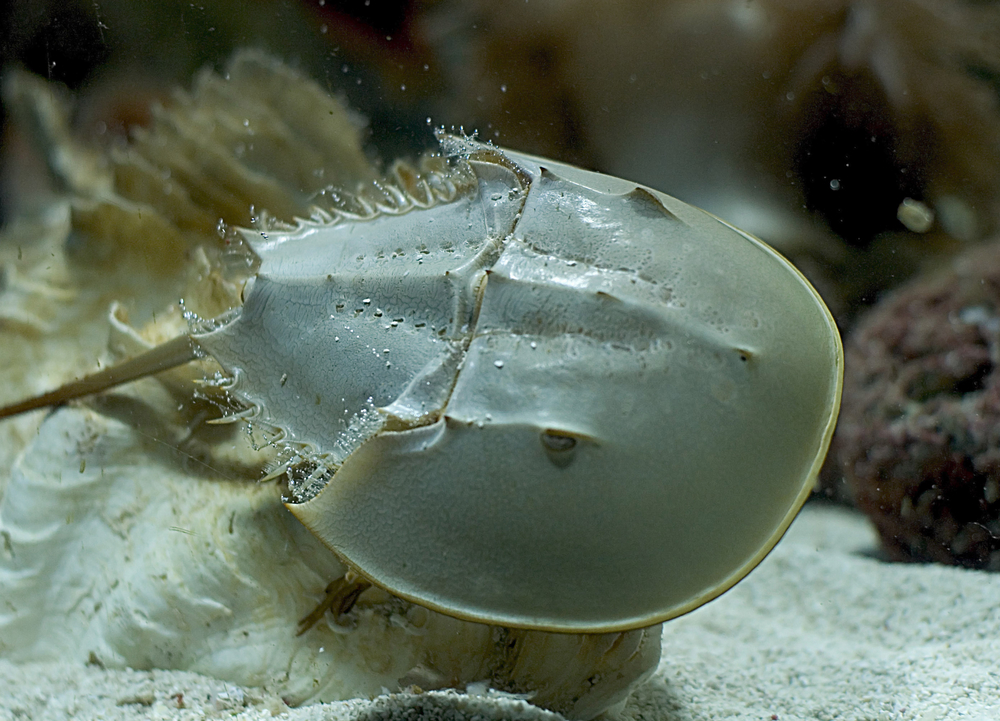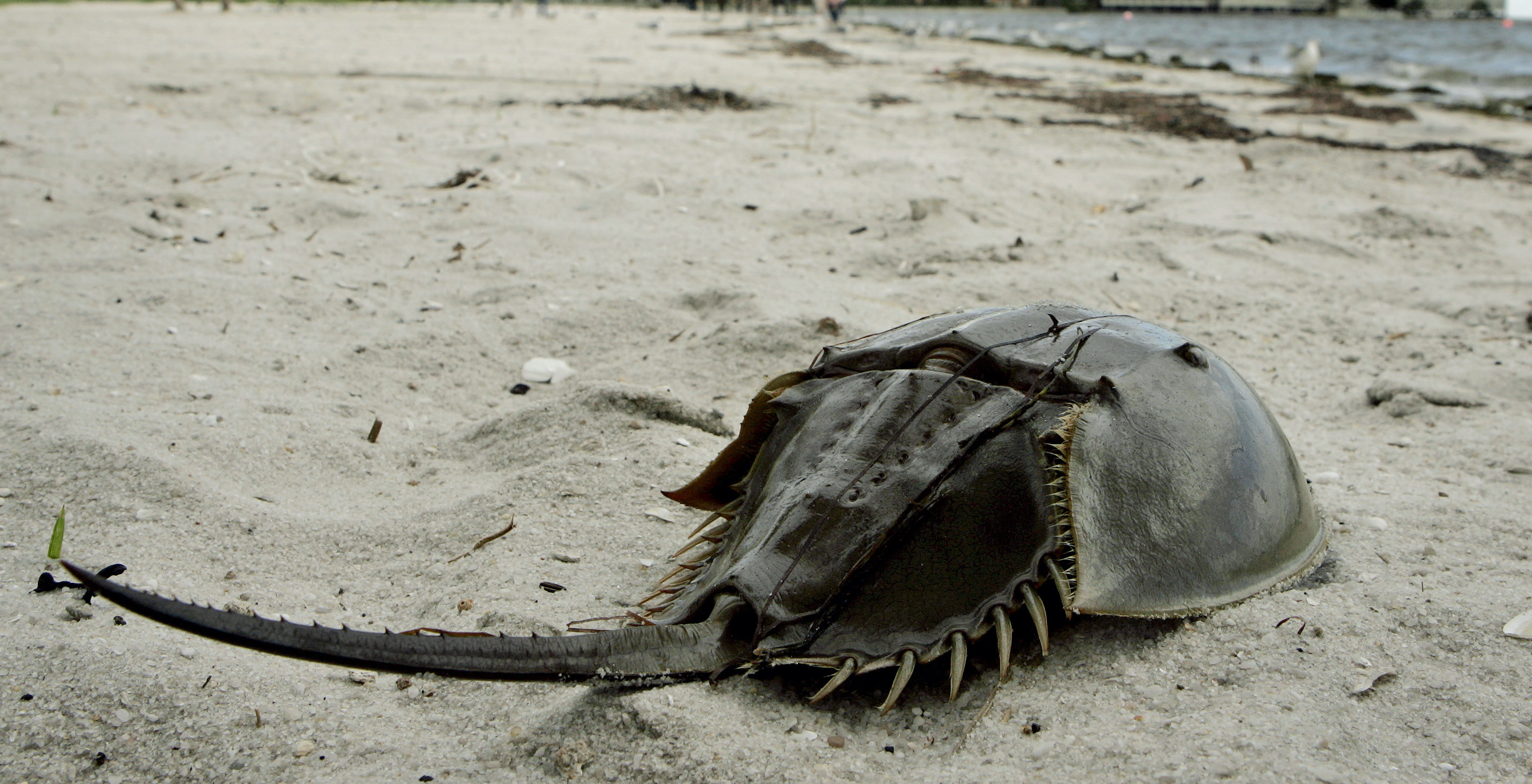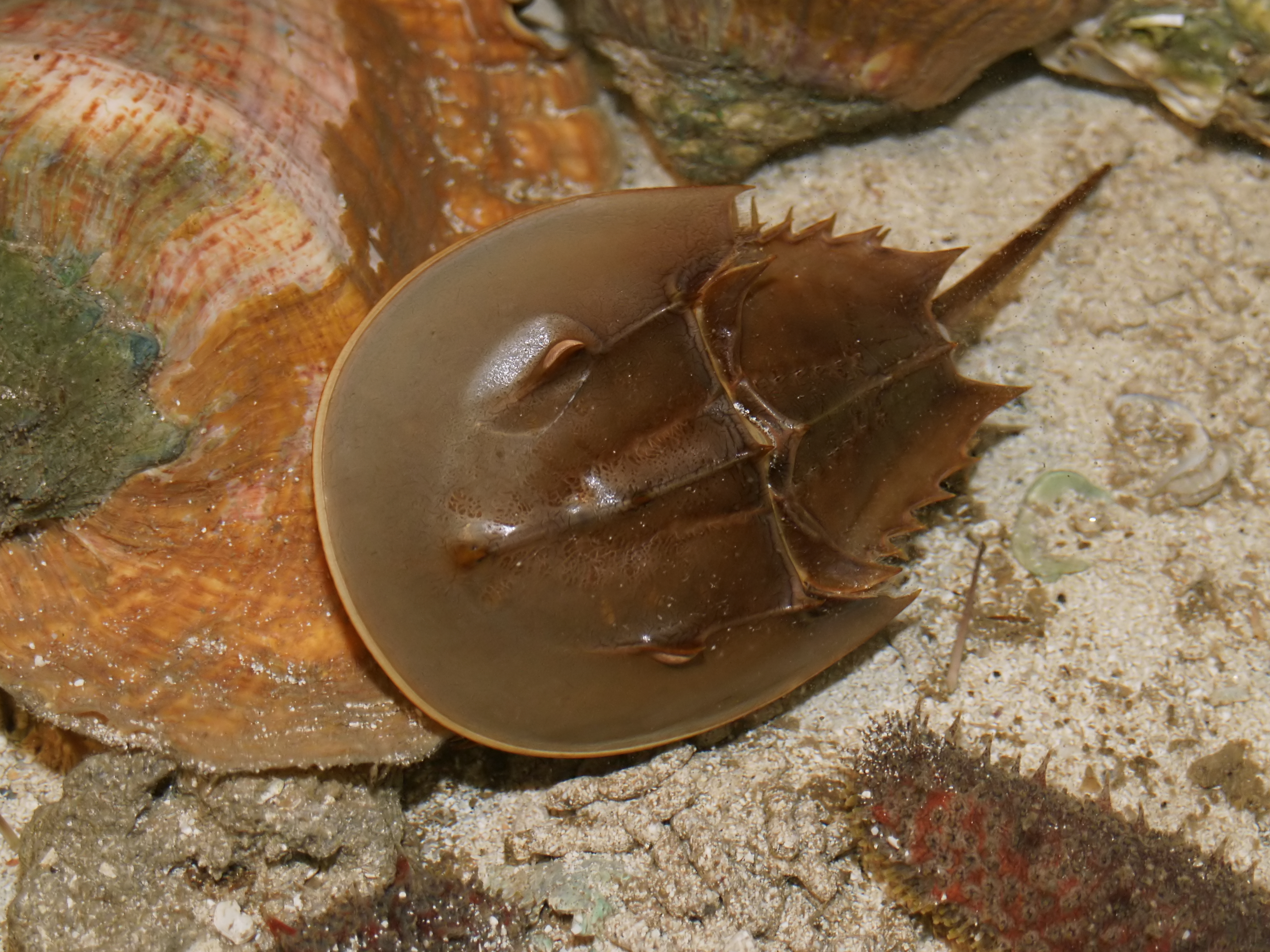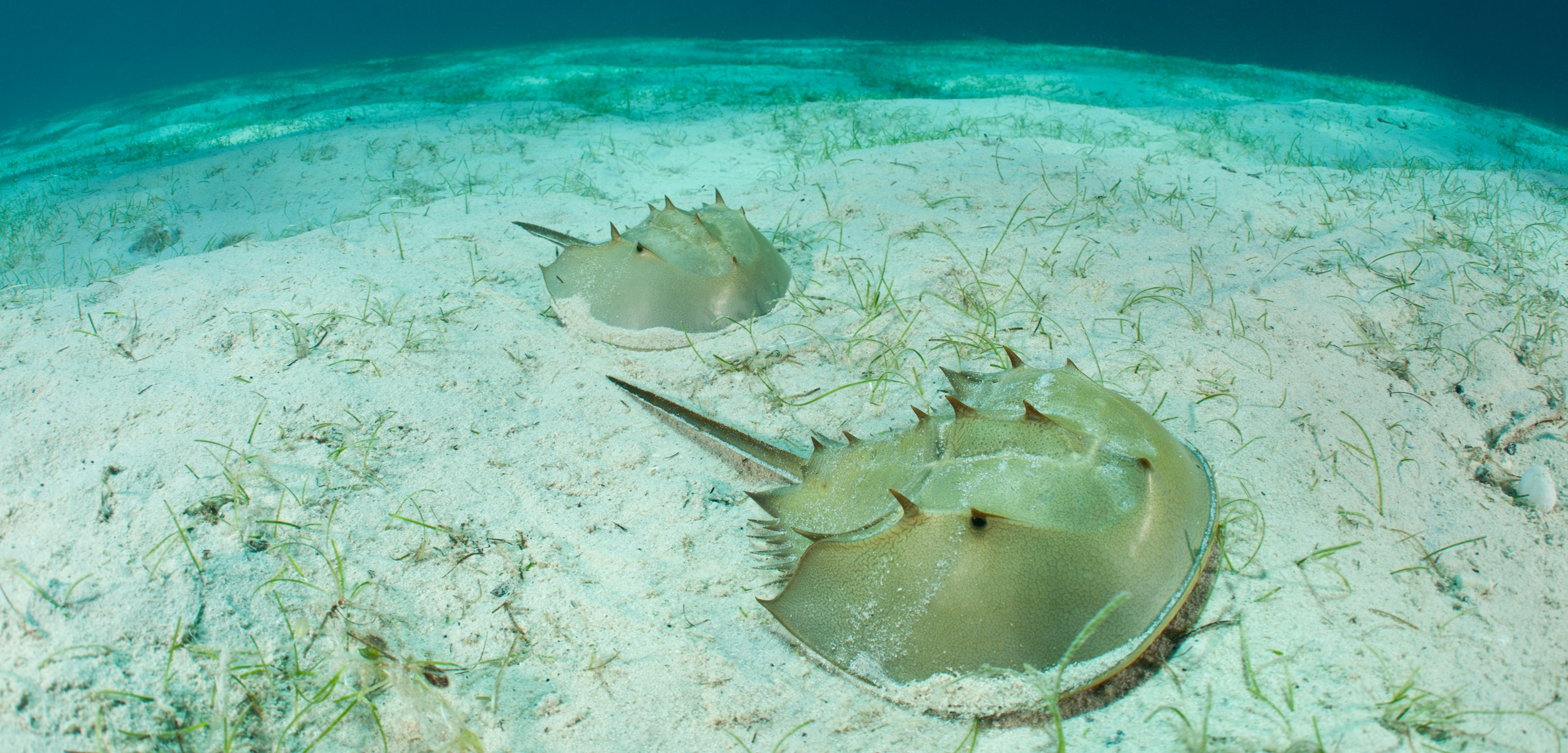STATUS
Near Threatened
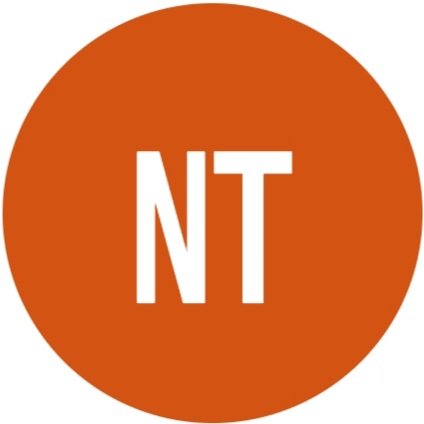

Horseshoe crabs have been around for more than 300 million years, making them even older than dinosaurs. They look like prehistoric crabs, but are actually more closely related to scorpions and spiders. The horseshoe crab has a hard exoskeleton and 10 legs, which it uses for walking along the seafloor.
The body of the horseshoe crab is divided into three sections. The first section is the prosoma, or head. The name "horseshoe crab" originates from the rounded shape of the head, because just like the shoe on a horse's foot, the head is round and U-shaped. It's the largest part of the body and contains much of the nervous and biological organs. The head has the brain, heart, mouth, nervous system, and glands-all protected by a large plate. The head also protects the largest set of eyes. Horseshoe crabs have nine eyes scattered throughout the body and several more light receptors near the tail. The two largest eyes are compound and useful for finding mates. The other eyes and light receptors are useful for determining movement and changes in moonlight.
The middle section of the body is the abdomen, or opisthosoma. It looks like a triangle with spines on the sides and a ridge in the center. The spines are movable and help protect the horseshoe crab. On the underside of the abdomen are muscles, used for movement, and gills for breathing.

STATUS
Near Threatened

SCIENTIFIC NAME
Limulidae

POPULATION
Only 4 species left

LENGTH
36 to 48 centimeters

WEIGHT
1 to 4.5 kgs

HABITAT
OCEANS
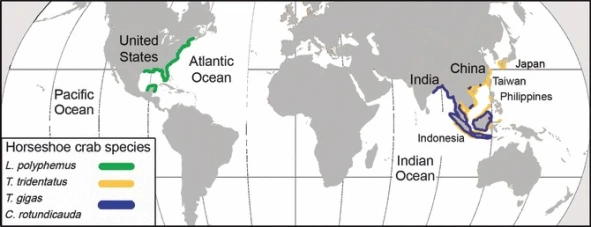
Horseshoe crab blood is blue in colour, due to the presence of copper. But that's not why it's valuable. It's valuable because it contains an "amebocyte" used in the field of biomedics to identify bacterial contamination in vaccines and all injectable drugs
Horseshoe crabs are an important part of the ecology of coastal communities. Their eggs are the major food source for shorebirds migrating north
Horseshoe crabs get their name because their arc shaped carapace, or exoskeleton, has been compared to the shape of a horse's shoe.
Their body is divided into three sections, the first of which contains their mouth, a pair of feeding pincers and five pairs of legs.
The anatomy of the species we have today is not much changed from those older forms. The life span of an individual horseshoe crab is not millions of years, but they can live up to 20 years!

